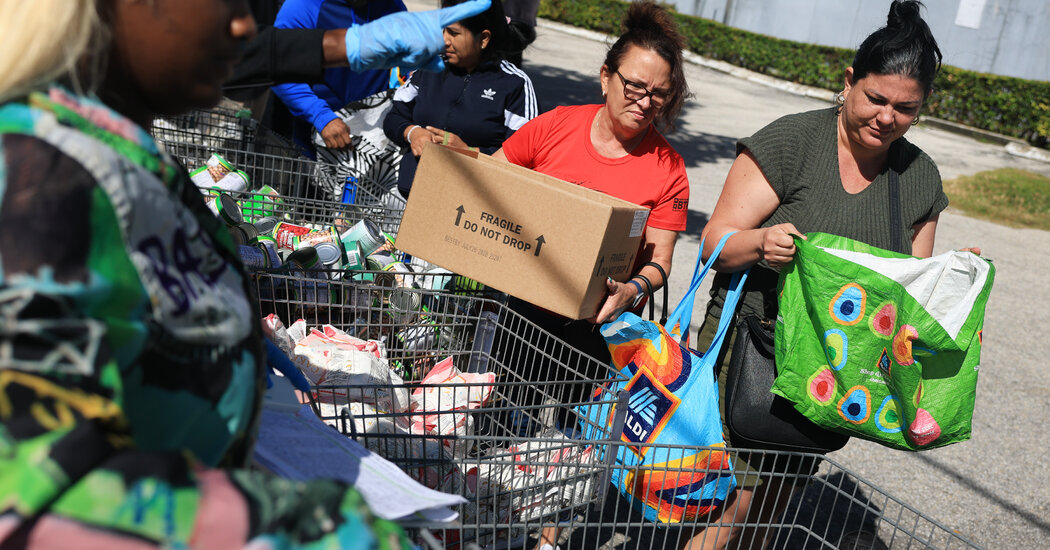Copyright The New York Times

President Trump on Friday characterized a coming lapse in funding for food stamps as a problem that would hurt “largely Democrats,” omitting that millions of people who rely on the food subsidies reside in Republican states and districts. Funding for the Supplemental Nutrition Assistance Program, or SNAP, was set to end on Saturday as the government shutdown enters its second month, leaving about 42 million people at risk of losing their aid. Though a federal judge on Friday ordered the Trump administration to continue paying for the program during the shutdown, it was unclear how fast the Agriculture Department could deliver benefits. Mr. Trump warned in a social media post that any food stamp benefits paid in November would “unfortunately be delayed.” Asked about the issue as he returned to Washington from a trip to Asia, Mr. Trump urged Democrats to vote to reopen the government, adding that a loss in benefits would affect “their own people.” “Largely, when you talk about SNAP, you’re talking about largely Democrats,” Mr. Trump said. “But I’m president. I want to help everybody. I want to help Democrats and the Republicans. But when you’re talking about SNAP, if you look it’s largely Democrats. They’re hurting their own people.” The New York Times was unable to find any recent breakdowns of the political leanings of SNAP recipients. Older surveys and proxy measures show that Mr. Trump has a point that Democrats tend to represent slightly more SNAP recipients. Nonetheless, Republicans still represent a sizable number of people who receive food assistance. Christopher Bosso, a professor of food policy at Northeastern University and the author of a book about the history and politics of SNAP, said he was unaware of any studies that examined voting patterns by recipients. But, he said, “I have no doubt that the cuts will affect Republican voters.” Among all states, those with unified Democratic control had an average SNAP participation rate of 12.5 percent, compared with 10.5 percent for Republican states and 11.7 percent with split control. Of the 100 congressional districts with the highest percentage of SNAP households in 2023, the year with the latest data available, 73 were represented by Democrats and 27 by Republicans. Among all districts, SNAP recipients made up an average of 10.9 percent of households in Republican-held districts and 13.8 percent in Democratic-held districts. And overall, Democrats represented nearly 8.5 million SNAP households and Republicans more than seven million. Among the 126 most solidly Democratic districts (those rated by the Cook Political Report to have a partisan voting index of 10 or more), SNAP households made up 15 percent of households received SNAP benefits. Among the 145 most solidly Republican districts, that number was 11 percent. And among the 28 most competitive districts, that number was also 11 percent. A 2012 survey from the Pew Research Center found that about 10 percent of Republicans surveyed said they had received food stamps, compared with 22 percent of Democrats. When shifting to ideology, rather than political party, though, self-identified conservatives were equally likely to say they had received benefits as self-described liberals (17 percent each). Separately, rural counties — which voted overwhelming for Mr. Trump — are likely to be disproportionately affected by any interruptions to SNAP. An August report from the Food Research & Action Center, a nonprofit that supports nutrition programs, noted that one in seven rural households relied on SNAP, compared with one in eight in metropolitan areas. And a 2024 analysis by Political Explorer, a data research company, found that more than 2,000 counties out of more than 3,000 reported an increase in the number of households receiving SNAP from 2010 to 2020. Mr. Trump won nearly 80 percent of those counties in that presidential election.



